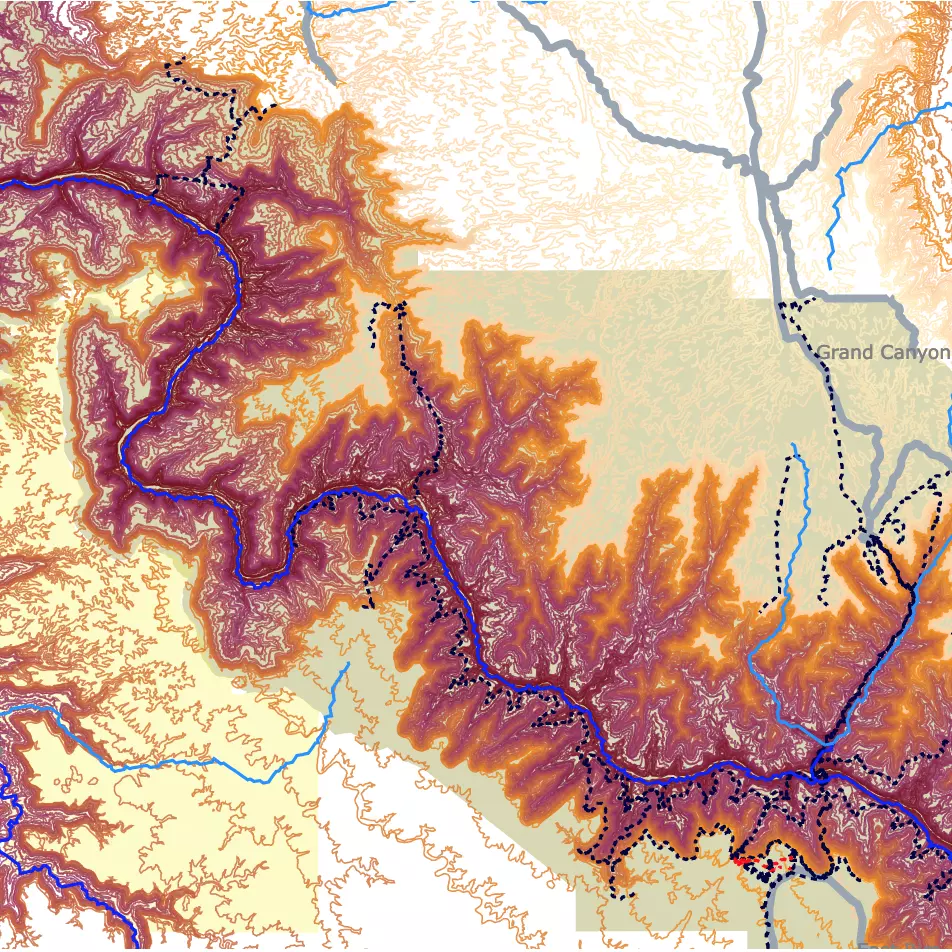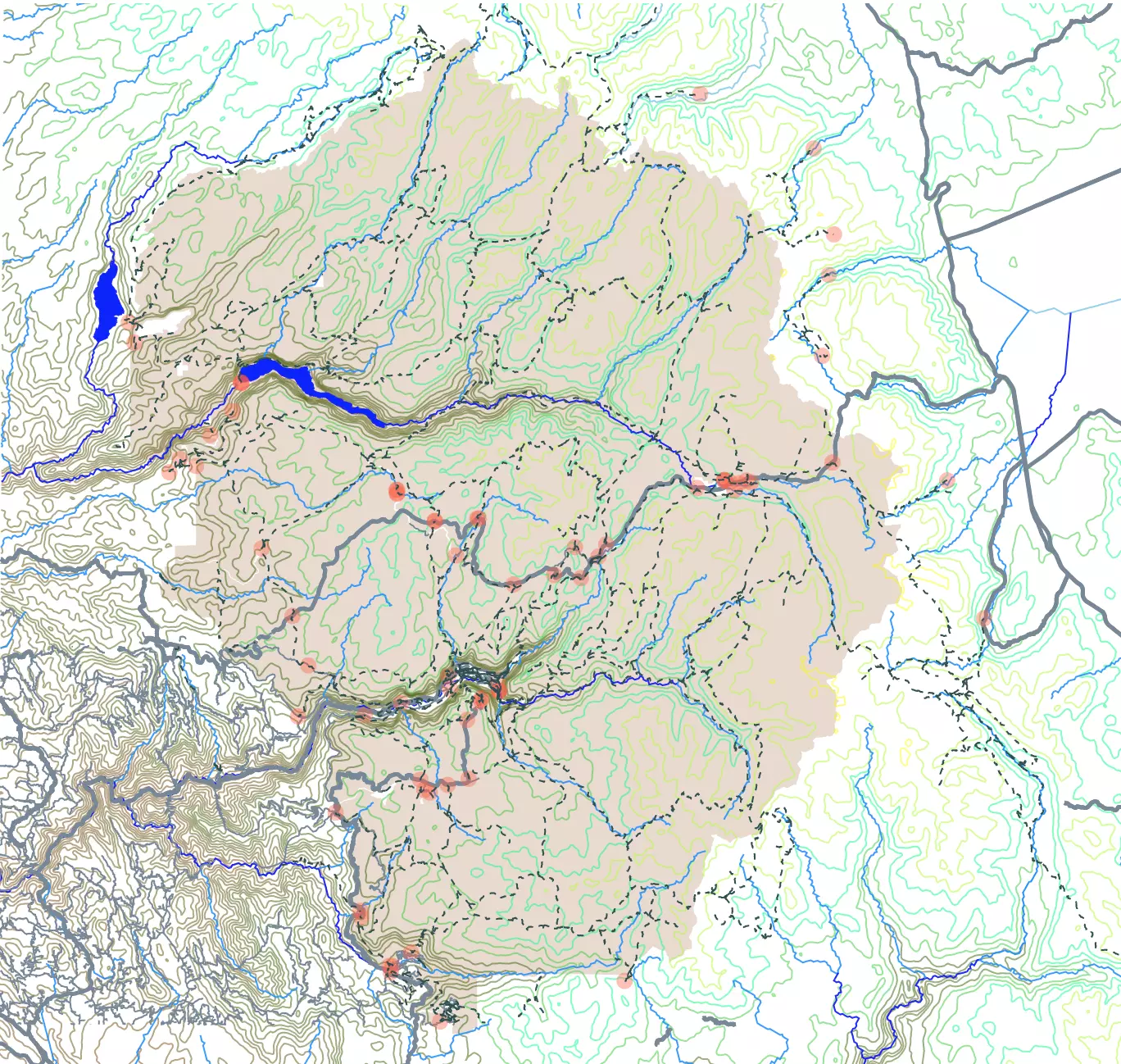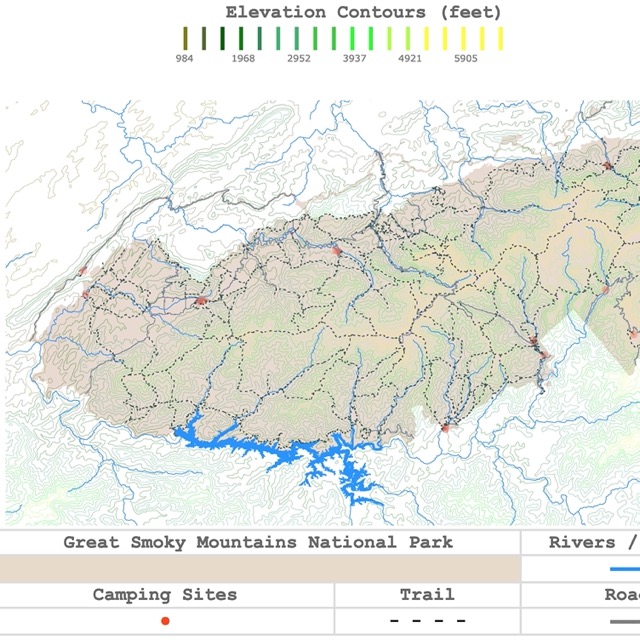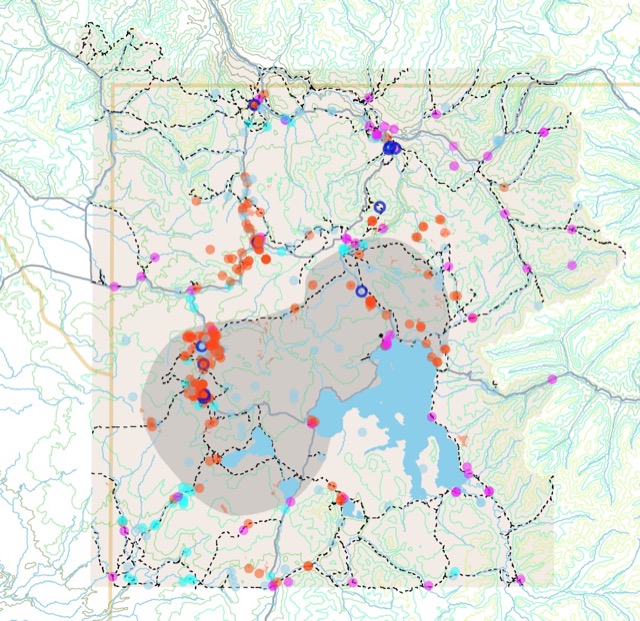U.S. National Parks Map
This interactive map shows the United States Administrative Boundaries of the National Park System. To find the names and information about the parks, hover over the map. To learn more, scroll down.
| Designation | |||||||
|---|---|---|---|---|---|---|---|
| National Park | National Monument | National Recreation | National Preserve | ||||
| National River | National Battlefield | National Military | National Historic | ||||
| National Lakeshore | National Memorial | National Reserve | National Scenic | ||||
| National Seashore | National River | ||||||
U.S. NATIONAL PARK SYSTEM
This map has 426 boundaries of the U.S. National Park System. This map includes name, state, type of national park, and Area in acres.
13 National Parks are part of the UNESCO World Heritage Sites. UNESCO Sites have spectacular landscapes, unique biodiversity, and cultural significance to make them part of their list.
21 National Parks are also UNESCO Biosphere Reserves. These Reserves find a way of improving the relationship between people and their local environment.
Finally, 27 National Parks have a Dark Sky Designation. These sites ensure that the skies are dark enough for stargazing at night.
The agency in charge of National Parks is the Department of Interior. To become a national park, an area must possess a nationally significant, natural, recreational, or cultural resource.
National Park System Classification
The U.S. National Park Service has at least 19 different designations, but they are commonly known as parks. For convenience, they are grouped into 13 different classes.
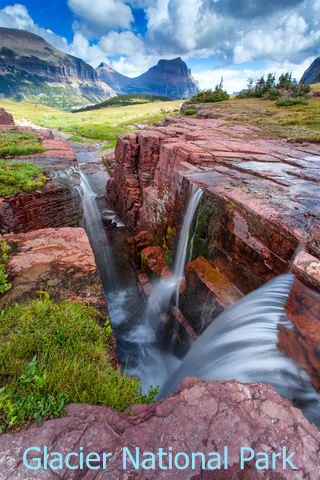
You can see them at the bottom of the map. Each National Park class has a different color. The exact designation is visible when you hover over each park.
National Parks encompass large areas and protect their resources. A national monument protects a resource but is usually smaller than a park and has a historical or archaeological significance.
National Seashores and Lakeshores protect water areas, and these areas provide different recreational activities.
National scenic trails are footpaths in areas of natural beauty. Historic trails recognize routes of historical significance. Source: NPS
If you would like to look in detail at some of these trails from the National Parks, I suggest you buy this collection from Amazon: National Parks Trail Map Collection. It includes topographic trail maps of the major Parks. The set comes in a box. The maps are waterproof and tearproof, so you can actually use them while outdoors!
Most Visited National Parks in the USA
There are many reasons why a park is frequently visited. Some parks benefit from their closeness to large populations. Others benefit from the ease of access. Because each park has its attributes, it is unfair to compare them just on visitor numbers.
This list is for you to start or to make sure you can avoid crowds next time you decide to go to a National Park.
The total number of visitors in 2019 was 327,516,619. The number of visitors ranked by park is from 2020, source: NPS.
| Park | State | Visitors in millions |
|---|---|---|
| Great Smoky Mountains | North Carolina | 12.1 |
| Yellowstone | Wyoming | 3.8 |
| Zion | Utah | 3.6 |
| Rocky Mountain | Colorado | 3.3 |
| Grand Teton | Wyoming | 3.3 |
| Grand Canyon | Arizona | 2.9 |
| Cuyahoga Valley | Ohio | 2.8 |
| Acadia | Maine | 2.7 |
| Olympic | Washington | 2.5 |
| Joshua Tree | California | 2.4 |
If you would like to read detailed descriptions of the major National Parks, this book highlights each park's extraordinary features. It has stories and impressive pictures about these incredible landmarks. Here is the link from Amazon: National Geographic Atlas of the National Parks.
Timeline of the Most Visited National Parks in the USA
Amazing Facts About U.S. National Parks
Because this is a compilation of National Parks, here are some interesting facts about the U.S. National Parks.
- The oldest park is Yellowstone National Park. It was founded in 1872.
- California has the most National Parks, with a total of 9 parks.
- Three of the highest waterfalls are located in Yosemite National Park in California.
- Death Valley National Park has the hottest temperatures recorded on Earth. They reached 134°F (56°C).
- The deepest point in the United States is Badwater Basin in Death Valley National Park, California. This basin is 282 feet (86m) below sea level.
- The Grand Canyon is considered one of the seven wonders of the world.
- The smallest national park is Gateway Arch, Missouri, it’s only 91 acres. The next smallest park is Hot Springs NP in Arkansas with 5,600 acres.
- Denali (also known as Mount McKinley) in Denali National Park, Alaska, is the highest mountain in North America.
- There are few ice caves worldwide and one of them is Glacier Ice Caves in Root and Kennicott glaciers in Wrangell-St. Elias National Park and Preserve, in Alaska.
- Glacier Bay National Park and Wrangell-St. Elias National Park in Alaska combined with the Kluane National Park and Preserve in Yukon, and the Tatshenshini-Alsek Provincial Park in British Columbia, Canada make the larest portected area in the world with approximately 8.5 million hectares.
- Sequoia National Park is home to the world's largest single-stem organism in the world. General Sherman is a sequoia tree that measures 275 feet.
- Bristlecone pines (Pinus longaeva) are extraordinary for being the oldest non-clonal species on the planet. They are found at the Great Basin National Park in Nevada.
- Congaree National Park in South Carolina is the habitat of the Synchronous Fireflies. This rare species of fireflies are known for synchronizing their flashing light patterns. This is such a rare event that there is a lottery to witness it.
- The deepest lake in the U.S. is Crater Lake in Crater Lake National Park, Oregon. The lake is 1,943 feet (592 meters) deep. This lake also has one of the most transparent waters. U.V. light penetrates as deep as 320 feet (100 m).
- At the U.S. Virgin Islands National Park drivers drive on the left hand side of the road.
- The U.S. Virgin Islands Coral Reef National Monument has the first known species of coral and sponges to live at the base of mangrove trees.
- There are only 2 underwater monuments. Both in the U.S. Virgin Islands.
- Mammoth Cave National Park in Kentucky has the most extensive cave system globally. It has more than 3,454 miles mapped.
- Painted Cave, in Channel Islands National Park California is not just beautiful but the fourth largest sea cave worldwide.
- Carlsbad Caverns National Park in New Mexico is home to the U.S.'s deepest cave. It is 1,593 feet (485m) deep.
- Delaware has no National Parks or National Monuments.
- There are about 25 active glaciers and more than 700 lakes of various sizes inside Glacier National Park, Montana.
- Steamboat Geyser in Yellowstone National Park is the tallest active geyser globally. Yellowstone is also the most significant geyser locale globally, with thousands of springs and about 400 geysers.
- Arches National Park in Utah has the largest concentration of stone arches worldwide.
- Kobuk Valley National Park in Alaska is the least visited National Park.
- In Alaska, two national parks are north of the Arctic Circle: Gates of the Arctic National Park and the Kobuk Valley National Park.
- The National Park of American Samoa is the only National Park Service south of the equator. Most of the park is coral reefs.
- Mauna Loa is the largest active volcano on our planet. It is found in Volcanoes National Park, Hawaii.
- The most remote unit of the National Parks is the National Park of American Samoa. It is located 2,600 miles (4,184 km) southwest of Hawaii. This is also the only park south of the Equator.
- The Kilawea volcano, also found at Hawaii's Volcanoes National Park has the Kazumura lava tube system. This is believed to be the world's largest lava tube in the world. It is more than is more than 40 miles (65 km) long.
- The Lava Beds National Monument in California has the largest concentration of lava tubes worldwide.
- The Everglades National Park is one of the most extensive wetlands in the world (but it used to be much larger). It is also the largest remaining subtropical wilderness left in North America.
- The Everglades is also composed of one of the largest contiguous stands of protected mangroves in the Northern Hemisphere.
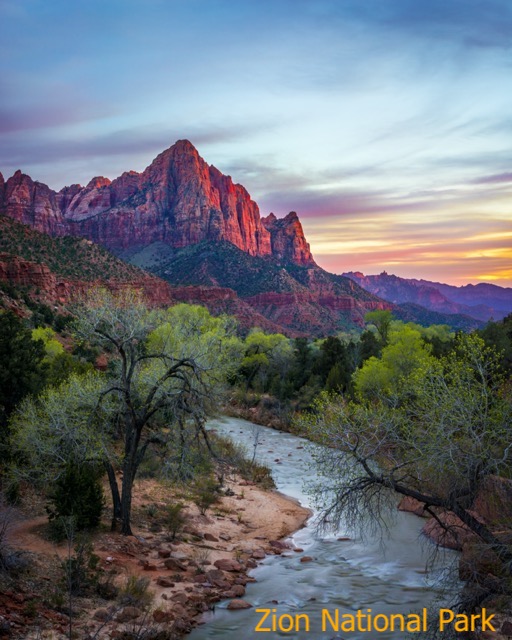
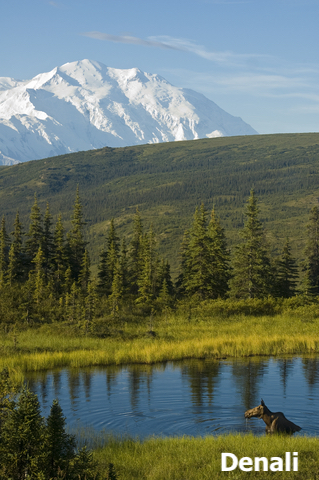
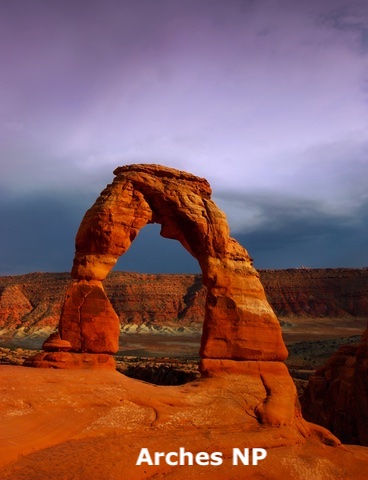
In case you want to fly to any of these locations, rent a car, and experience the parks in all their beauty, get great deals from Expedia!
U.S. States and Their Parks
This table has the names of all U.S. states. Each name has a link to a page with an interactive map of the National Parks, State Parks, National Forests, Reserves, and Bureau of Land Management Units of every state.
Because there are more National Parks than those present in each state. Here are the U.S. Territories with links to their pages and respective National Parks and Preserves.
Many of the parks in these states have camping and RV access. If you prefer a more comfortable stay in a nearby location, don't hesitate to visit VRBO.
Largest National Parks in the USA
The size of a National Park might not sound important once you are talking about millions of acres.
Nevertheless, in ecological terms, it is important for these habitats, to sustain wildlife. Many times this is achieved through large continuous, uninterrupted masses of land.
Large sizes ensure that herbivores find enough plants to graze on, and carnivores have a large area to hunt and feed themselves.
From an ecological point of view, the size of a park becomes essential. As for tourism, the previous examples show us which parks will have more sites to impress us.
But, they also show us which might saturate with visitors in peak tourist season. Meanwhile, large parks might give us the distance and space from others that are not provided in popular parks.
The National Park system has more than 85 million acres. Below is the list of the largest parks. These values include National Parks and Preserves.
| Park | State | Acres in millions |
|---|---|---|
| Wrangell-St. Elias | Alaska | 8.3 |
| Gates of the Arctic | Alaska | 7.5 |
| Denali | Alaska | 4.7 |
| Katmai | Alaska | 3.6 |
| Death Valley | California | 3.3 |
| Glacier Bay | Alaska | 3.2 |
| Lake Clark | Alaska | 2.6 |
| Yellowstone | Wyoming, Montana, Idaho | 2.2 |
| Kobuk Valley | Alaska | 1.7 |
| Everglades | Florida | 1.5 |
| Grand Canyon National Park | Arizona | 1.2 |
| Glacier | Montana | 1.0 |
| Olympic | Washington | 9.2 |
| Big Bend | Texas | 8.0 |
| Joshua Tree | California | 7.8 |
| Yosemite | Montana | 7.6 |
Fortunately for visitors, these popular parks have large and comfortable stays and resorts. Prices, dates, and amenities in Hotels.com.
National Parks by State
Below is a list of National Parks by state. Some National Parks may appear more than once because they may be shared by more than one state.
| State | Park |
|---|---|
| Alaska | Denali National Park |
| Gates of the Arctic National Park | |
| Glacier Bay National Park | |
| Katmai National Park | |
| Kenai Fjords National Park | |
| Kobuk Valley National Park | |
| Lake Clark National Park | |
| Wrangell-St. Elias National Park | |
| American Samoa | National Park of American Samoa |
| Arizona | Grand Canyon National Park |
| Petrified Forest National Park | |
| Saguaro National Park | |
| Arkansas | Hot Springs National Park |
| California | Channel Islands National Park |
| Death Valley National Park | |
| Joshua Tree National Park | |
| Kings Canyon National Park | |
| Lassen Volcanic National Park | |
| Pinnacles National Park | |
| Redwood National Park | |
| Sequoia National Park | |
| Yosemite National Park | |
| Colorado | Black Canyon of the Gunnison National Park |
| Great Sand Dunes National Park | |
| Mesa Verde National Park | |
| Rocky Mountain National Park | |
| Florida | Biscayne National Park |
| Dry Tortugas National Park | |
| Everglades National Park | |
| Hawaii | Haleakala National Park |
| Hawai’i Volcanoes National Park | |
| Idaho | Yellowstone National Park |
| Kentucky | Mammoth Cave National Park |
| Indiana | Indiana Dunes National Park |
| Maine | Acadia National Park |
| Michigan | Isle Royale National Park |
| Minnesota | Voyageurs National Park |
| Missouri | Gateway Arch National Park |
| Montana | Glacier National Park |
| Yellowstone National Park | |
| Nevada | Death Valley National Park |
| Great Basin National Park | |
| New Mexico | Carlsbad Caverns National Park |
| White Sands National Park | |
| North Dakota | Theodore Roosevelt National Park |
| North Carolina | Great Smoky Mountains National Park |
| Ohio | Cuyahoga Valley National Park |
| Oregon | Crater Lake National Park |
| South Carolina | Congaree National Park |
| South Dakota | Badlands National Park |
| Wind Cave National Park | |
| Tennessee | Great Smoky Mountains National Park |
| Texas | Big Bend National Park |
| Guadalupe Mountains National Park | |
| Utah | Arches National Park |
| Bryce Canyon National Park | |
| Canyonlands National Park | |
| Capitol Reef National Park | |
| Zion National Park | |
| Virgin Islands | Virgin Islands National Park |
| Virginia | Shenandoah National Park |
| Washington | Mount Rainier National Park |
| North Cascades National Park | |
| Olympic National Park | |
| West Virginia | |
| New River Gorge National Park | |
| Wyoming | Grand Teton National Park |
| Yellowstone National Park |
IUCN Protected Areas and National Parks
IUCN is a program within the World Commission on Protected Areas. IUCN stands for International Union for Conservation.
Protected Areas are "a clearly defined geographical space, recognized, dedicated and managed, through legal or other effective means, to achieve the long term conservation of nature with associated ecosystem services and cultural values".
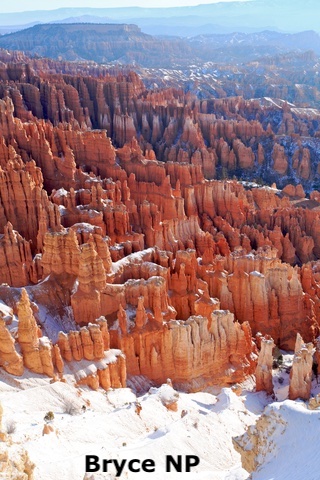
"Protected areas – national parks, wilderness areas, community conserved areas, nature reserves and so on – are a mainstay of biodiversity conservation, while also contributing to people’s livelihoods, particularly at the local level." Source: IUCN Programme
IUCN helps countries designate and manage these areas so they can value and conserve biodiversity while sharing its benefits equitably.
IUCN Protected Areas Categories
As you explore each state through the links above, you may read that some have an IUCN category.
Their purpose is to classify protected areas according to their management objectives.
These excerpts are summarized from IUCN Categories System:
- Ia Strict Nature Reserve: Category Ia are strictly protected areas set aside to protect biodiversity and also possibly geological/geomorphic features.
- Ib Wilderness Area: Category Ib protected areas are usually large unmodified or slightly modified areas, retaining their natural character.
- II National Park: Category II protected areas are large natural or near natural areas set aside to protect large-scale ecological processes, along with spiritual, scientific, educational, recreational, and visitor opportunities.
- III Natural Monument or Feature: Category III protected areas are set aside to protect a specific natural monument.
- IV Habitat/Species Management Area: Category IV protected areas aim to protect particular species or habitats and management reflects this priority.
- V Protected Landscape/ Seascape: A protected area where the interaction of people and nature over time has produced an area of distinct character.
- VI Protected area with sustainable use of natural resources: Category VI protected areas conserve ecosystems and habitats together with associated cultural values and traditional natural resource management systems.
National Parks Revision
This map used to be about North America's National Parks and include the National Parks of Canada and National Parks of Mexico. It seemed logical to show adjacent parks to those in neighboring countries. Nevertheless, each nation deserved its own page. So I created one for each country.
U.S. National Parks Map Resources
The shapefiles with data for the United States National Parks were obtained from NPS.
The shapefiles with state polygons were downloaded from Naturalearth.
This map will be updated with improved and recent information! To receive updates on this and more nature maps, join my email list!!!!!!!
Made by Luz K. Molina with D3.js.

